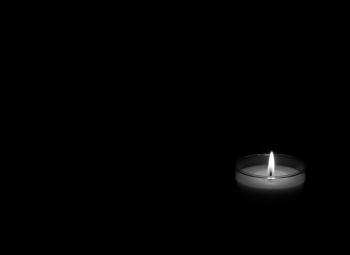
- Vol 35 No 4
- Volume 35
- Issue 4
PTSD and Suicide After Natural Disasters
This article summarizes literature on post-disaster mental health and describes the public health crisis in Puerto Rico. Special attention is given to highlight higher suicide rates and PTSD that develop in post-disaster areas.
Everyone in Puerto Rico (PR) was affected by Hurricane Maria, which made landfall on September 20, 2017 as the largest scale natural disaster in the US during our lifetime. Many months later, Puerto Ricans continue to face unreasonable obstacles that prevent recovery. This article summarizes literature on post-disaster mental health and describes the public health crisis in PR. Special attention is given to highlight higher suicide rates and PTSD that develop in post-disaster areas.
Psychosocial context and obstacles to recovery
A country with a high-income economy, PR experienced financial decline a decade before Hurricane Maria. A recession and high unemployment rates led to a depopulation process. From 2006 to 2016 the population decreased from 3.9 to 3.4 million.1 Migratory flow during the economic crisis resulted in compromised provision of essential services and a large exodus of medical professionals. Homicide and suicide rates nearly doubled and binge drinking increased. Approximately 50% of adults in PR are binge drinkers compared with the US national average of 17%.2
Currently, 45% of the island residents live in poverty. Hurricane Maria caused an estimated $100 billion in damages.3 Four months post-impact 32% of the population had no electricity and 14% had no potable water.4 The official death toll has been questioned, and physicians acknowledge an increase in unreported deaths of vulnerable persons because of inadequate access to medical care.
Case Vignette
Mr. S is an elderly man from PR who now lives in the continental US. He has sarcoidosis, diabetic retinopathy, and blindness. He is being treated for PTSD after early childhood trauma and adult retraumatization from domestic violence. Mr. S reports to his psychiatrist that his brother had died in PR 3 weeks after the hurricane. He had been in adequate health but was oxygen dependent, after the hurricane he lost access to medical equipment and died of suffocation. Mr. S, in acute grief, was conflicted about attending the funeral. As a brittle diabetic, he feared that his health would be compromised if he went to PR. With no electricity or potable water, refrigeration for his insulin would be impossible. Encouraged by his family and physicians, he decided not to attend funeral services and instead held a memorial mass in memory of his deceased brother.
A conversation with Natalio Izquierdo, Past President of the PR Medical Association, confirms that unreported deaths due to delayed access to care have surpassed media estimates. Izquierdo, an ophthalmologist, coordinated with medical centers in the US for emergency transfers using Air Force planes to import essential supplies and transport patients needing urgent interventions. Puerto Rican physicians have made heroic efforts on behalf of their patients, but many hospitals, ambulatory care centers, dialysis centers, chemotherapy infusion centers, radiation oncology suites, operating rooms, and doctors’ offices remain inaccessible or unable to maintain adequate levels of care.
An excerpt from a journal entry of a resident of PR illustrates the situation in PR post-hurricane [Anonymous, shared with author 2017].
My immediate reaction to the hurricane was to check in with relatives to ensure they were safe. This took several days as communications were down and roads were blocked with fallen trees and debris. We began to learn the severity of damages through scattered news reports. I stayed disconnected from my mother, who lived merely 30 miles away, for several days. She lives alone and I feared for her wellbeing. Eventually we made contact and I was relieved to find out she was uninjured, but I felt guilty that I could not help others who experienced loss. Anxiety grew. I had poor concentration, erratic sleep, distressing dreams and was startled when hearing sirens or gunshots at night. Agitation and anxiety would alternate with apathy, withdrawal, and numbness. Some symptoms improved but I struggle to stay motivated and productive. Debris still line the streets, some towering as high as homes. Homes have shattered or boarded up windows and parts of the roof missing, and traffic lights at intersections are down or dangling on wires. One of the hardest realizations was that recovery from this hurricane would not take months, but years. This was a rude awakening to the vulnerability of the very institutions that are expected to be able to respond in situations such as these. Hope waxes and wanes.
Economic losses following natural disasters compound physical destruction and health outcomes. A study following typhoons in the Philippines found that household income drops and infant mortality rises the year after a typhoon hits, and economic deaths by far exceed exposure deaths, by a factor of 15.7
New Orleans lost 44% of its population a year after Katrina, and unemployment rose to 33%.1 Will PR be faced with a similar exodus and economic downturn? Experts estimate that by 2019, PR will lose an additional one-half million residents. Physicians and other health professionals are relocating to the continental US in large numbers. William Julio, from the Puerto Rican Psychiatric Society, reports that the number of psychiatrists in the island decreased from 500 to 300 over the last decade.
Suicide following natural disasters
Although suicide rates vary depending on the location and population studied, we see that suicidal behavior increases following natural disasters. In PR there was an average of 19 suicides per month in the 8 months before Maria in 2017, and 25 suicides per month in the immediate 3 months post Maria (
Kessler and colleagues6 noted significant increases in the prevalence of suicidal ideation and suicide plans 6 months post-hurricane Katrina compared with 2 years later. They concluded that follow-up outcomes persist and even intensify because psychosocial stressors associated with the natural disaster continue or intensify as time progresses.
From a psychodynamic standpoint one could formulate that dissociation, reaction formation, and heroic efforts that occur soon after a disaster serve as protective factors against suicide, but these defenses only offer temporary relief as the grim reality of destruction and loss evolve into complex affective states of disillusionment, hopelessness, and helplessness. These complex states of mind correlate with high suicide risk and may explain the protracted post-disaster increase in suicide deaths.
PTSD after natural disasters
The literature on PTSD after natural disasters is extensive. Neria and colleagues7 undertook a comprehensive review of the relationship between man-made compared with natural disasters and PTSD in survivors between 1980 and 2007. Findings from the survey indicate PTSD prevalence among direct victims of disasters of 30% to 40% compared with a prevalence of 5% to 19% in the general population. PTSD determinants include sociodemographic and background factors, event exposure characteristics, social support factors, and personality traits.
A study of Florida residents exposed to Hurricane Andrew in 1992 found that the prevalence of PTSD increased to 26% and 29% at 6 and 30 months after the disaster.8 A specific finding of this study was that while intrusion and arousal symptoms declined over time, avoidance symptoms increased. Variables found to be predisposing factors in this study included specific populations at risk (eg, minorities, elderly, children, direct victims, first responders), persons who bear the brunt of the social and economic consequences, and the magnitude of exposure to the event. Particularly, degree of physical injury, immediate risk of life, severity of property destruction, distance from epicenter, people who experienced loss of family members, and people who suffered property loss or were forced to relocate were at higher risk for PTSD. Additional risk factors for PTSD after hurricanes and other natural disasters are listed in
Blackouts and power outages post-disaster negatively affect mental health. Studies after Hurricane Sandy, which caused outages lasting up to 2 weeks, found a dose-response relationship between the quantile of maximum blackout percentage and the risk of mental health problems.9 Mood disorders, anxiety disorders, substance use disorders, and utilization of psychiatric resources in the New York area increased for months to a year after Hurricane Sandy.
Sub-threshold PTSD, common in post-disaster states, results in significant morbidity. In Louisiana, previously considered a permutation of generalized anxiety disorder (GAD) colloquially became known as “Katrina brain.” Many Katrina survivors with GAD described additional symptoms of irritability, diffuse anger, guilt, and health worries.
After the September 11 terrorist attacks, researchers at the New York State Psychiatric Institute studied the morbidity of sub-threshold PTSD among disaster survivors and found increased suicide rates of sub-threshold PTSD, even after controlling for MDD.10
Conclusion
With little economic relief in sight in the foreseeable future, approximately a million Puerto Ricans are expected to present with PTSD in the next 2 years and hundreds will die by suicide as a result of the hurricane. We hope that this article will serve to clarify protracted disaster-related psychopathology, especially within the context of psychosocial and economic stressors. In addition we hope heighten awareness among members of the World Psychiatric Association and American Psychiatric Association, at institutional-systemic and national-local levels, to offer assistance to those affected by this humanitarian crisis.
Dr Alfonso is Associate Professor of Psychiatry, Columbia University Medical Center, and Chair, Psychotherapy Section of the World Psychiatric Association.
Dr Alfonso reports no conflicts of interest concerning the subject matter of this article.
References:
1. Melendez E, Hinojosa J. Estimates of Post-Hurricane Maria Exodus from PR; October 2017.
2. NIH-NIAAA. Alcohol and the Hispanic Community; 2015. https://pubs.niaaa.nih.gov/publications/hispanicfact/hispanicfact.htm. Accessed February 23, 2018.
3. Coto D. Murders in Puerto Rico surge as Hurricane Maria recovery continues. Time Magazine. January 11, 2018.
4. FEMA. Hurricane Maria. https://www.fema.gov/hurricane-maria. Accessed February 23, 2018.
5. Preliminary Statistics of Cases of Suicide in Puerto Rico, January to November 2017[in Spanish].
6. Kessler RC, Galea S, Gruber MJ, et.al. Trends in mental illness and suicidality after Hurricane Katrina. Mol Psychiatry. 2008;13:374-384.
7. Neria Y, Nandi A, Galea S. Post-traumatic stress disorder following disasters: a systematic review. Psychol Med. 2008;38:467-480.
8. Norris FH, Perilla JL, Riad JK, et al. Stability and change in stress, resources, and psychological distress following natural disaster: findings from Hurricane Andrew. Anxiety Stress Coping. 1999;12:363-396.
9. Lin S, Lu Y, Justino J, et al. What happened to our environment and mental health as a result of Hurricane Sandy? Disaster Med Public Health Prep. 2016;10:314-319.
10. Marshall RD, Olfson M, Hellman F, et al. Comorbidity, impairment, and suicidality in subthreshold PTSD. Am J Psychiatry. 2001;158:1467-1473.
Articles in this issue
over 7 years ago
Five Things to Know About Inflammation and Depressionover 7 years ago
Is PTSD a Systemic Disorder?over 7 years ago
College Students Under Stressover 7 years ago
The Prevalence of Schizophrenia in the USover 7 years ago
Birthday Partyover 7 years ago
Online Communities for Drug Withdrawal: What Can We Learn?Newsletter
Receive trusted psychiatric news, expert analysis, and clinical insights — subscribe today to support your practice and your patients.

















